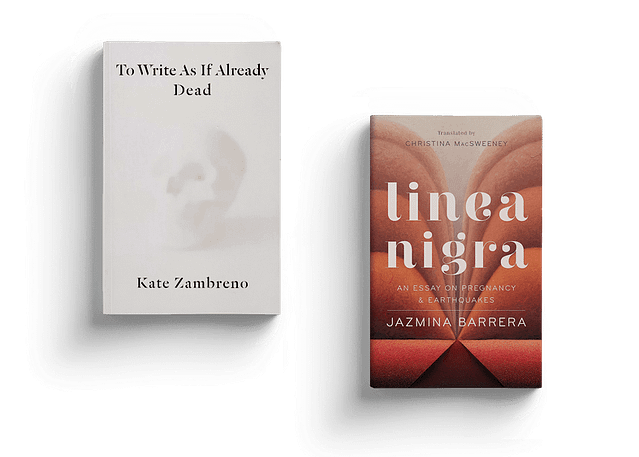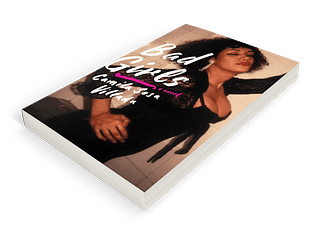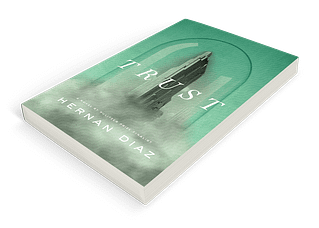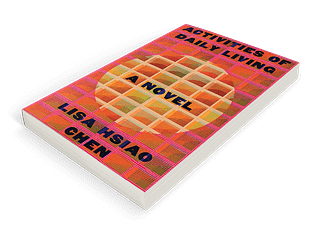Criticism Online
Art Criticism That Pauses To Breastfeed
On recent books by Barrera and Zambreno.
By Nikki Shaner-Bradford

For a time in 2020, while consuming the potentially fetal-fatal medication Accutane, I was buying pregnancy tests in bulk and emailing photos of the negatives to my doctor for prescription approval. Somewhere between ripping into a new test, pissing on it, and setting the three-minute timer, I invariably messaged my best friend to announce my limbo state: What if I’m pregnant? What if I’ve immaculately conceived an alien baby?
In those moments I was writing, however briefly, a text pegged to the real time of my body. In forty-five seconds — now forty-four — I would know whether something inside me had already changed. Of course, nothing ever did, and when the timer sounded, I forgot about my body all over again.
“The notion of writing a pregnancy diary feels a little hackneyed,” admits Jazmina Barrera in the opening pages of her new book Linea Nigra: An Essay on Pregnancy & Earthquakes, translated from the Spanish by Christina MacSweeney. Barrera is still in the early stages of her pregnancy: a heartbeat has just appeared, and she reads weekly “fruit bowl” analogies with her partner. A fetus the size of a blueberry, a future lemon, a maybe-baby. Barrera begins to document the symptoms of her pregnancy, which present as much like illness as a series of inquiries into her own artist mother, other pregnant writers and muses, the earthquakes rattling hospitals and paintings in Mexico, and ways in which environment influences each month of gestation.
It’s difficult to pin down the origins of the pregnancy diary when the story of motherhood is as old as humanity itself, if not older. I imagine the first mother must have recounted something of use to her successor. Nora Doyle’s history of motherhood in early America, Maternal Bodies, documents the transference of knowledge between generations of mothers through letters and diaries, like early drafts for What to Expect When You’re Expecting. This archive, which mostly features middle class and elite white women with the time and ability to write, seems to emerge from centuries of oral traditions and advancements in literacy. Though these writings reflect on the anxieties of respectability and social norms for mothers of the period, Doyle notes that “their drive to record the bodily experiences of motherhood triumphed over the impulse to evade the messiness of corporeality.”
Today, that bestselling cornerstone of contemporary prenatal culture, What to Expect When You’re Expecting, is in its fifth edition with a curtain-banged pregnant cover-star and “lifestyle trend” coverage of e-cigarettes, push presents, and juice bars. By promoting its own spin-off Pregnancy Journal & Organizer, What to Expect encourages documentation. Journaling to combat stress, analyze dreams, track meals (and later breastfeeding), and outline a birth plan; the pregnancy diary is framed both as a strategy for distraction and a method of record keeping.
What is it about documenting the changes, or would-be changes, of the body that preoccupies so many of us? Pregnancy diaries and baby bump progression posts; crying selfies; bloody nose selfies; hospital selfies; cancer literature; wartime literature; PTSD literature; AIDS crisis art; Judy Blume’s puberty oeuvre; tweets from urgent care. When we talk about “writing the body,” we refer to the way corporeality is both quintessentially regular and painfully individual. And each year there is more and more talk of it. Though the phrase cropped up just before the rise of What to Expect, it has gained traction in recent years as literary communities increasingly seek to address traditions of difference and marginalization. Writing the body is different from writing, it seems. Disembodied is the norm, embodiment a kind of corrective gesture or specialization. Discussions, panels, classes, articles, anthologies, and books turn the phrase into a mission statement. (Doyle’s chapter on pregnancy diaries is itself called “Writing the Body.”) The experience of being “other” is so often that of being forced into the body that “writing the body” syllabi mostly feature literature about race, gender, sexuality, disability, illness, and displacement. Forgetting the body is not only a privilege, it’s the Western canon.
Yet within the past year, books by Jazmina Barrera and Kate Zambreno put forth a form of writing inspired and shaped by the body. Barrera’s pregnancy diary-turned-book, Linea Nigra, declares itself “an essay on pregnancy and earthquakes,” while Zambreno’s 2021 To Write as if Already Dead is the two-part result of a commissioned study on the French writer Hervé Guibert. The first half is a novella dissecting an online friendship between two writers, while the second is a hybrid work, equally diary and essay, tracing Zambreno’s second pregnancy alongside her study of Guibert, which concludes in the midst of the 2020 pandemic lockdown in New York. Each offers a kind of literary doppelgänger for the other, unintentional companion pieces that paint two portraits of the writer as a mother. Together they assert a model of writing that is constantly aware of the body. Art criticism that pauses to breastfeed.
This kind of writing is not new for Barrera or Zambreno. Both of their publication lists consist of works that combine literary history, personal narrative, and an interest in the body with such consistency that the physical body is inextricable from their textual bodies of work. (In 2018 Zambreno was even invited to speak on a “Writing the Body” panel for The White Review, which, as she reveals in To Write as if Already Dead, was aptly preempted by a bathroom-stall breastfeeding.) Then there’s Zambreno’s chosen Guibert work, To the Friend Who Did Not Save My Life, the 1990 novelization of his AIDS diagnosis and treatment, which is as corporeal as a text can be, written against the sped-up stopwatch of a terminal illness. Inspired by Guibert, Zambreno sets herself a deadline, “amidst the deadline of my body,” to write the study before she determines the viability of her early pregnancy. Throughout the project this deadline moves, expanding and contracting until the final days before Zambreno gives birth.
The problem of time permeates Linea Nigra and To Write as if Already Dead. Not only do both works document changes to the body in real time, they were also written within its constraints. The texts are fragmented, visually and linguistically packaged and paced by the body. In To Write as if Already Dead this takes the form of short sections denoted by titles like “Deadline” and “Contracting,” while Barrera’s book is divided into four essays, each comprised of short graphs strung together via asterisk. They announce their corporeal deadlines, then pass them. For Zambreno, these fragments represent the unavoidable constraint of a finite attention span, each section an attempt to take advantage of any pause for breath before the next gust of change. Barrera envisions the inevitable narrative arc of a pregnancy book “should finish with weaning… that was the plan: for the narrative thread to be the body, the transformations of the body. The plan for this book didn’t include earthquakes or mothers with cancer.”
But these are books of interruptions. Barrera and Zambreno document their processes — Barrera typing notes into her phone while she breastfeeds, Zambreno recovering from illness in the space of her notebook — but then a baby cries, the seismic alarm sounds, a contraction comes, Barrera’s mother is diagnosed with ovarian cancer, Zambreno develops shingles, paid projects take precedence, the body is weary. Both writers are meant to be writing other books than the ones we are reading. Zambreno’s Guibert study moves further and further from its initial conception; Barrera is expected to write another book from a prior grant proposal, and the foundation refuses to accept this new work. “I must sit down and write that book, whereas this one writes itself. I write it but it writes itself, like Silvestre in my womb,” Barrera observes. Each book follows its writer to museum exhibits with children in tow, witnesses their attempts to absorb art into criticism, watches them create new fictions from their limited attentions. (“My child is converting me into something I never intended to be: a novelist,” writes Barrera as she projects herself into these exhibition spaces through photos and notes.)
The result is two books that are as much about pregnancy as they are about the surrounding world. Although a book and a baby are born in each instance, it’s the incubating environment and influences that ultimately give these writings their life. Zambreno searches for an elusive copy of Sophie Calle’s Exquisite Pain; the hospital where Barrera intends to give birth in is damaged by an earthquake; Zambreno’s due date coincides with the height of the pandemic; Barrera tracks down the grandson of indigenous Mexican model Luz Jiménez to tell the story of the woman behind the photographs. At the end of Linea Nigra, Barrera lists the texts she read, mostly on her phone, while breastfeeding. Many of these resources are not directly related to pregnancy or motherhood, but are works by or about “someone born of a woman.” Once again, we are reminded to think of writing, and gestation, as acts of acculturation and accumulation. Prenatal criticism is equally witness to, and affected by, pregnancy and art — in Barrera’s words, “one in the center of the other.”
Relatively early on in her pregnancy, Barrera discovers two theories: “The first proposes that a pregnant woman is a container holding an independent being. The second says that the baby is part of the body of the pregnant woman, as if it were one more organ,” she writes, “I think both theories are correct. The baby is both things at once, and is constantly changing.” This notion of the womb as a “fetal container” is one that historian and philosopher of science Sarah S. Richardson explores in her book The Maternal Imprint, which interrogates our understanding of maternal-fetal effects, or the impact a mother’s choices and genetics have upon her unborn child. Though Richardson’s primary focus is on epigenetics, her resulting conception of the maternal body offers a compelling framework for the literary genre Barrera and Zambreno are working within. Borrowing a term from anthropologist Jörg Niewöhner, Richardson argues for an understanding of the “embedded body,” to describe one that “is everchanging, entangled, emergent, and imprinted by its environment.” Richardson challenges readers to conceive of a fetal environment that extends beyond the mother or the womb, and instead to imagine the body as an “archetypal fetus,” one that is layered within its social, environmental, corporeal, and genetic contexts.
The problem of the fetal container theory is not unlike the genre problem. When a mother is seen as a fetal container, her personhood is reduced to the viability of the fetus, and the future of the child is predetermined by her choices and circumstances. When writing is predetermined as “pregnancy” or “feminist” or “of the body,” its reading narrows into context collapse. “Writing the body” creates a false distinction between writers who are embodied and those who are not. Applying Richardson’s framework to art abandons the binary of writing the body or not writing the body, and instead imagines a genre of embedded literature, populated by writers like Barrera and Zambreno, who wriggle their way out of every container. Each study of pregnancy becomes a study of the embedded life of the writer, one of flesh and weather and thought and sound.
“I know of other female authors who are also writing about pregnancy, childbirth, and breastfeeding,” writes Barrera. Surely she has read Zambreno by now. Zambreno listed Linea Nigra as one of her books of the year. “I love this new mode of writing and hope that it will become much more than a fashion. That there will be more of us. Many more,” Barrera continues, “I want a canon and a tradition. And also a rupture, counter-canon books. New literary genres.” What to Expect When You’re Expecting claims to be read by 93% of women who read a pregnancy book, which is likely comprised of those who are pregnant or hoping to be. For a long time, this expectation has remained unchanged. It’s that limited conception of who writing about pregnancy is for rather than the pregnancy diary itself, that seems a little hackneyed to me. Perhaps the “question” of writing the body will cease when more writers, like Barrera and Zambreno, remind us of its omnipresence. It went into the page somewhere, even if you can’t see it right now. It’s embedded.
Should the critic have a body? Would it be a distraction or an aid? For Barrera and Zambreno, it’s both.
I am typing this now with both hands. I wonder, how are you reading it? How many breaths have you taken? How long until we forget ourselves again?


